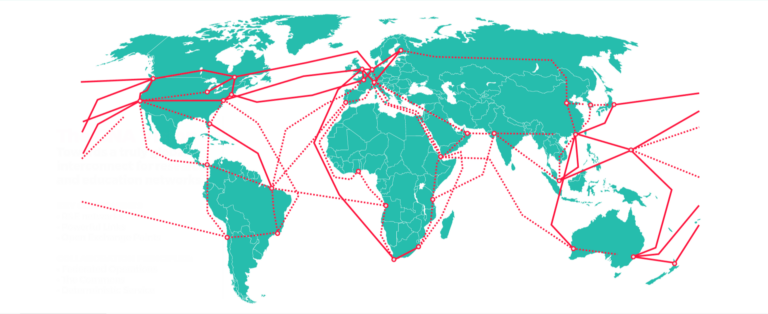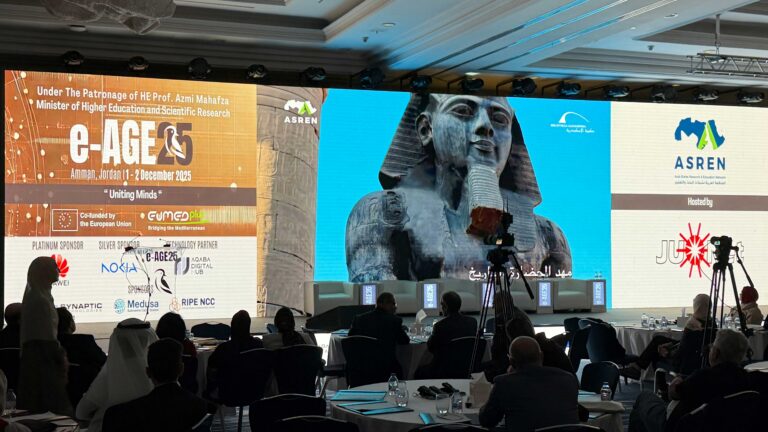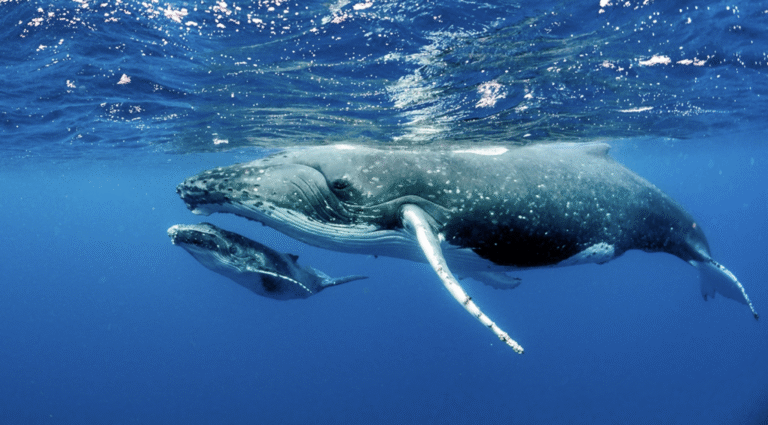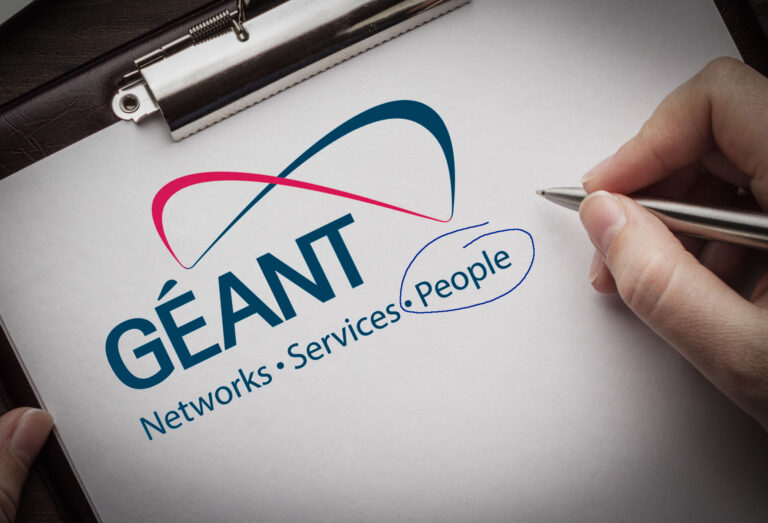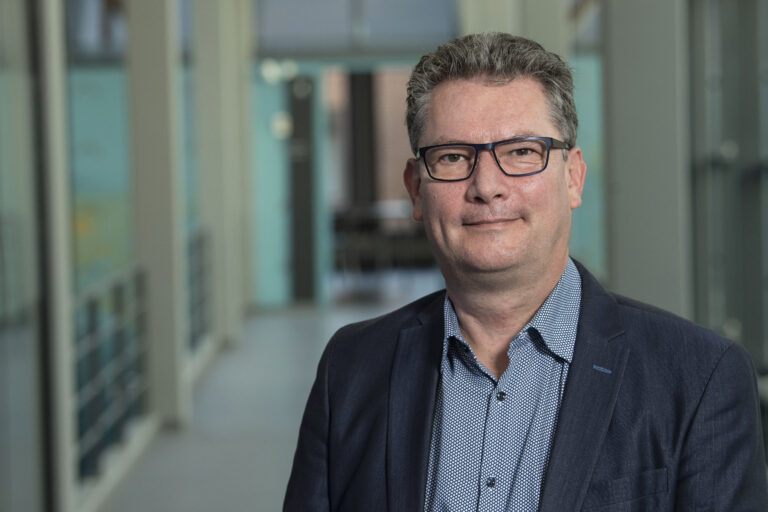– Bandwidth for transatlantic research and education now at record-breaking 740 Gbit/s
– Seven-party strong collaboration is first step toward Global Network Architecture for research and education
April, 2017
Scientists around the world are increasingly collaborating to address global issues such as clean energy, medicine and protecting the environment. Their ability to share and analyse data is essential for advancing research, and as the size of datasets grows, the need for high-speed global network connectivity becomes ever more critical.
Collaborating across the Atlantic
That is why research and education (R&E) networks in Europe and North America have joined forces to find new ways to help facilitate and enable scientific collaboration. Between them, the R&E networks on the two continents have now deployed links providing a total bandwidth of 740 gigabits per second (Gbit/s).
This record-breaking connectivity and resilience is the work of the Advanced North Atlantic (ANA) Collaboration. Started in 2013, ANA consists of six leading R&E networks: CANARIE (Canada), ESnet (USA), GÉANT (Europe), Internet2 (USA), NORDUnet (European Nordics), and SURFnet (The Netherlands).
“We’ve seen a tremendous growth in transatlantic connectivity since we have demonstrated the first 100Gbit/s R&E transatlantic link at TNC mid 2013”, said Erwin Bleumink, CEO of SURFnet. ”I am very pleased with the success of this international collaboration in turning an idea inspired by scientific usage and market development into high quality service delivery.”
“Collaborations between research and education networks are unique and enable us as a community to address the exponentially growing data needs of science collaborations worldwide,” said Inder Monga, director of the US Department of Energy’s ESnet, which deployed four transatlantic links comprising 340 Gbit/s in December 2014. “The combined capability offered to the research and education community far exceeds what any single organization can provide and moves us many steps forward towards accomplishing our vision of ‘scientific progress being completely unconstrained’.”
Adding robust resiliency to keep research data moving
Over the past three years, this partnership has continued to add bandwidth and resilience across the North Atlantic. The most recent addition by the NEAAR Project, coordinated by Indiana University (USA) and funded by the US National Science Foundation (NSF), adds a 100 Gbit/s connection between exchange points in New York City and London.
“While NEAAR brings an additional 100 Gbit/s to the mix, we are excited to not only add to the total bandwidth but also to the increased resilience, as the NEAAR 100 Gbit/s is implemented on a cable system that was not in use yet by the R&E networks,” said Jennifer Schopf, the NEAAR Project PI at Indiana University. “We are delighted to be part of this North Atlantic collaboration, where trust and sharing of resources is key, and will now be able to put more emphasis on reaching out to African R&E networks, as part of the mission of NEAAR.”
With the addition of NEAAR’s 100 Gbit/s link, the total amount of general purpose R&E connectivity across the North Atlantic Ocean now is at 400 Gbit/s. Additionally, ESnet operates 340 Gbit/s of bandwidth via four distinct circuits across the North Atlantic Ocean. To provide robust resilience to science, research and education traffic, the partners also act as each other’s back-ups in case of major outages or lengthy fibre cuts, which are two common concerns with managing transoceanic high-speed cable systems.
Securing future connectivity – The Global Network Architecture
While the transatlantic high-speed links develop and expand, a group of network specialists from R&E networking organizations and Exchange Points operators from around the world are also collaborating to ensure researchers see the end-to-end performance results their science requires not just locally but globally.
To achieve this, senior R&E Network architects from around the world, including organizations involved in the North Atlantic collaboration, have developed a set of global principles and technical guidelines for collaboration, as well as sharing costs and aligning investments.
This work – under the umbrella of the Global Network Architecture (GNA) initiative – is defining a reference architecture and creating a roadmap for both national and regional research & education networks to more seamlessly support research on an end-to-end basis. Ultimately, this effort will establish a more capable, predictable and resilient next-generation global interconnect for research and education.
ANA declares itself GNA compliant
In January 2017, the first public version of the GNA Reference Architecture was released. The ANA Collaboration is very excited to announce its compliance with this architecture.
“We are pleased to see that the first piece of intercontinental R&E network infrastructure has been assessed as compliant with the GNA Reference Architecture,” said NORDUnet CEO René Buch. “We are confident that organisations and collaborations elsewhere soon will be able to declare their GNA compliancy. This will enable us to further develop a GNA compliant global research and education interconnect.”
Dave Lambert, President and CEO, Internet2: “The vision to establish a more robust set of architecture principles upon which advanced international research networks could be built was launched a couple of years ago, and I am happy to see that we have agreed to initial standards and moved to implementation so quickly. What this creates is a much more solid foundation upon which global research and science projects can advance their outcomes.”
Steve Cotter, GÉANT CEO: “This work is a critical first step in showing how diverse networking organisations supported by multiple government funding bodies can come together in a collaborative way to support those tackling society’s challenges. Together, we are testing new operational models and finding cost-efficiencies that can become the model for a global research and education infrastructure.”
Jim Ghadbane, President and CEO, CANARIE: “We’re very happy to work with our global partners to design and deliver the infrastructure that researchers need to advance science in their communities and around the world. The work of the ANA is a great example of how global collaboration of resources and expertise can serve the needs of researchers at the local level.”
View a timeline of the planned growth of the Global Network Architecture.
For more information on the Global Network Architecture initiative: https://gna-re.net/
For an in-depth look into the world of R&E networks, please go the international blog In The Field, showcasing stories from around the world about people and projects making a difference connected by research and education networks.




